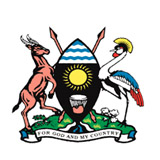
There is evidence that Uganda is making progress towards the Millennium Development Goals (MDG) 4 and 5 targets for child and maternal health but this progress needs to be accelerated. Uganda’s under-five mortality rate declined from 152 per 1000 live births in 2000 to 137 in 2006 while the infant mortality rate declined to 76 from 88 per 1000 live births during the same period. Forty percent of infant deaths occur during the first month of life – the neonatal period – amounting to 45,000 each year. An equal number of babies are born with no signs of life. Risk factors for neonatal deaths are also the major risk factors for maternal deaths. Meeting the MDG 4 targets will therefore require a strong focus on reducing neonatal deaths. In the Health Sector Strategic Plan II (2005/6 – 2009/2010), the Government of Uganda prioritised newborn health care. Consequently the Road map for Accelerating Reduction in Maternal and Neonatal Morbidity and Mortality (2006-2015) and the Child Survival Strategy (2008- 2015) were developed with specific interventions to address the constraints of newborn health.
This implementation framework is a result of collaboration between The Ministry of Health Child Health and Reproductive Health Divisions, Save the Children’s Saving Newborn Lives programme, WHO, UNICEF and the Newborn Technical Working Group of the Maternal and Child I Health Task Force. This framework has been refined through feedback from a number of stakeholders consulted in a series of meetings including the final meeting of January 2009 attended by over 50 participants representing implementers at district and regional level, policy makers from other departments of the Ministry of Health (MoH) and members of the professional health associations, which finalised and endorsed the framework
The overall goal of this document is to stimulate operationalisation and integration of the newborn health component of the Child Survival Strategy and the Road map of the Ministry of Health into existing maternal and child health programs. Thus the concept of Maternal, Newborn and Child Health (MNCH) enhances the integration of services as one component in the minimum health care package. It would not only help address gaps in newborn health service provision as identified in the recent Situation Analysis of Newborn Health in Uganda, but would also facilitate and catalyse the realisation of our goals For improving MNCH and the overall health system through improved coverage of evidence based interventions across the continuum of care.
The audience of this framework is wide and ranges from frontline health workers at the facility and the facility-community interface to sub-district and district level managers, programme officers at the national level, non-government organisations (NGOs) and other partners, both donor and technical assistance agencies.
We strongly encourage programs and partners to use this document to integrate newborn health in existing programs in order to enhance operationalisation of the Child Survival Strategy and the Road map.